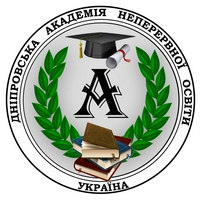THE USE OF ELEMENTS OF ART THERAPY IN CORRECTIVE-DEVELOPING WORK WITH CHILDREN
Abstract
The article is devoted to the current problem of modern special pedagogy - the use of elements of art therapy in corrective and developmental work, because these elements are considered the most acceptable and effective in working with children with special educational needs. Rozkriti Zmіst is an individual Vikoristannye Elementiv art-therapy in the core-nitrum robot with a special dedication, the yak is able to be in the urahuvannya ditini, the type of jerk off piston. The directions of using elements of art therapy in correctional and developmental work are highlighted: psychophysiological (related to the correction of psychosomatic disorders), psychotherapeutic (related to the impact on the cognitive and emotional spheres), social-psychological (performs catharsis of aesthetic, regulatory, communicative functions ), socio-pedagogical (related to the development of aesthetic needs, the expansion of the general and artistic-aesthetic horizons, and the activation of the child's potential in practical artistic activity and creativity). Various aspects of the use of elements of art therapy are analyzed as one of the most interesting and creative methods of work, which helps to use the available opportunities of art to achieve positive changes in the emotional, intellectual and personal development of a child with special educational needs. It is noted that the use of elements of art therapy in corrective and developmental work with children with special educational needs allows for more effective influence on the formation of the emotional sphere, encourages the further development of
compensatory properties of preserved functional systems, and improves the child's s it possible to carry out a simultaneous corrective effect on both primary, secondary and tertiary disorders, as well as to maximally mobilize the child's creative potential and find those ways of creative self-expression that best
correspond to his capabilities and needs.
ocial adaptation. This makes
References
2. Никифорова Е. С. Фольклор як засіб розширення соціокультурного досвіду вихованців з інтелектуальною недостатністю. Виховання і навчання дітей з порушеннями розвитку. 2015. № 3. С. 19‒26.
3. Нікішина Л. Т. Федоткіна Л. А., Вадрус Л. М., Некряч Н. С., Образцова О. М. Адаптована програма з арт-терапії для дітей з обмеженими можливостями. 2017. URL : https://www.krok.org.ua/files/File/Rehabcentre/ Progr9.htm (дата звернення : 29.07.2022).
4. П’ятницька-Позднякова І. С. Арт-терапевтичні можливості видів мистецтва. Педагогіка : Наукові праці. 2009. Вип. 95. Т. 108. С. 36‒42.
5. Савінова Н. В., Середа І. В., Борулько Д. М. Технології корекційно-виховного процесу : навч.-метод. посіб. Миколаїв : Іліон, 2018. 172 с.
6. Спеціальна психологія у питаннях і відповідях : навч. посіб. / укл. О. В. Чепка. Умань : ВПЦ «Візаві», 2016. 104 с.

 ISSN
ISSN  ISSN
ISSN 

